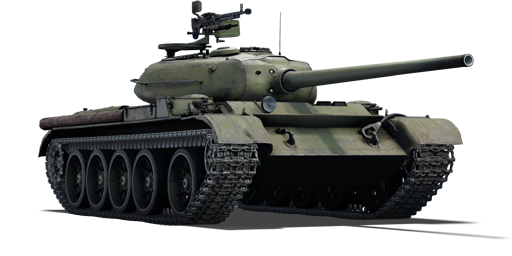The T-54 Model 1947 is the first variant of the T-54 main battle tank family. It was manufactured from 1946 to 1948, featuring a streamlined turret and wide gun mantlet, a new V-54 engine, and a 100 mm D-10T tank gun. Only a small number were built for the trials, which were a complete failure. As a result, production of the T-54 Model 1947 variant was halted until new modifications were implemented, resulting in the T-54 Model 1949 variant. The overall production journey was long and complex, with nearly 1,490 modifications made from the first variant to the last variant. It is also one of the oldest families of main battle tanks, with a long combat history that is still fielded by several nations today.
Introduced in Update 1.43, the T-54 Model 1947 has strong overall capabilities. It is one of the earliest ancestors of modern main battle tanks, with reliable armour, a good gun, and decent mobility. However, as high-explosive anti-tank (HEAT) rounds are becoming more common, it is still advised to use any available cover. The turret on this tank is strong, but players must be aware of the trap shot in the front. Overall, by using its excellent mobility and playing smart, this tank will prove to be a formidable force on the battlefield.















